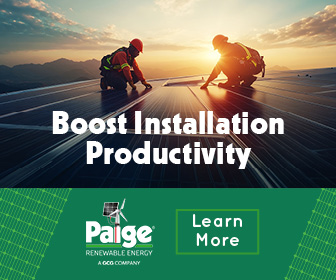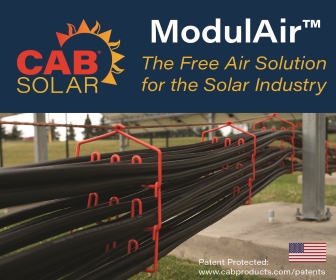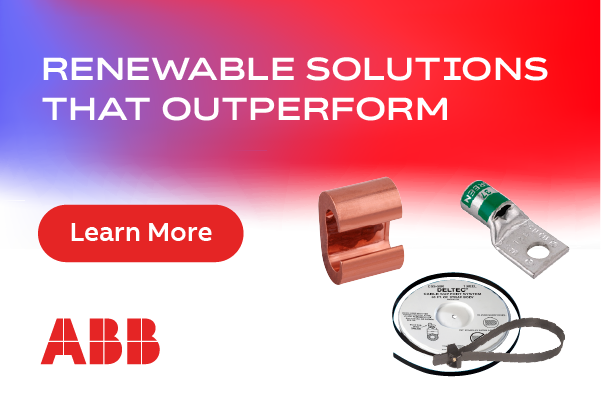Optimizing your PV Business and Passing on the Savings for North American Clean Energy
Given the current state of the PV market, the installation business is becoming more competitive. As the dollar-per-watt cost of PV hardware drops, installers can find it increasingly difficult to stay profitable. For installers looking for ways to improve their competitiveness and bottom line, inverter selection may be the key.
Inverters are only about 10 percent of a PV system's cost, but they significantly influence soft costs including customer acquisition and Balance of System (BoS) costs. The inverter also has 100 percent control over secondary costs, such as monitoring and reporting. So, how can an inverter reduce these costs and help installers optimize their business?
Expanding Market Reach
The first area in which installers can become more competitive is market reach. By expanding their market reach to roofs that cannot support standard PV systems, installers access an entirely new group of potential system owners. Many roofs cannot optimally support PV due to the angle, multiple facets, or other factors. Certain inverter solutions, however, especially those with module-level MPPT, can help installers expand their market reach. This means that installers would have access to an entirely new market to which their competitors may not.
Sales
At the sales stage, there are two specific ways that installers can become more competitive. The first is through offering more competitive quotes. The second is by decreasing the average cost of customer acquisition. Installers can improve the competitiveness of their installation and system quotes by offering solutions that provide value. A technology that can provide more value is one that offers mismatch mitigation in order to increase the lifetime system production, thereby decreasing payback time. Take, for example, a new and innovative inverter that offers 99% CEC efficiency. For the homeowner, this means more power is translated into useable energy for a decreased Levelized Cost of Energy (LCOE) of the system. This extra edge of 1 percent or more of improved efficiency can be enough to help an installer win the installation bid. If a larger percentage of bids are won, then the average acquisition cost is lowered.
To reduce average acquisition costs, installers can increase the average price of their sales by using technology that increases system size. By increasing the size of each individual sale (and thus increasing the revenue from each customer), installers can lessen the average cost of customer acquisition. Most standard inverter technology limits the system size either due to inherent technology confines or the roof design. Using technology that increases design flexibility means that more PV panels can be designed into the system. Standard inverters do not allow for parallel strings of unequal length or multiple orientations, different capacities, and layout in the same string. This means that roof design often dictates system capacity. However, with technology that maximizes design flexibility, installers can increase system size to better address the needs of the homeowner. Oversizing can also make a dramatic impact. The more an inverter allows for oversizing, the larger the system size can be. Some inverters today can enable up to 155% DC/AC oversizing. By increasing the system size, owners get more power and make more revenue, while the installer gains a competitive advantage and can increase the average profit per installation.
System Design and Installation
From selecting system components to layout, the design stage can be a time consuming and complicated phase in the sales process. However, when a system maximizes design flexibility and eliminates many of the standard design constraints, the design stage becomes streamlined. While design software is important, it is the components that are key to shortening the design stage. Design simplicity allows installers to be significantly more efficient when designing PV systems. Additionally, products can be built and programmed to help enable faster installation and commissioning. For instance, some new inverters are small and light enough that they can be installed by only one person.
Safety
Another important element that can impact the profitability of both system and the installer is safety. Many new regulations are being issued, such as the integrated arc fault protection standard and integrated rapid shutdown for NEC 2014 and 2017 690.12. Even though they are important for improving system safety, these new standards can potentially increase the LCOE of a system. However, they do not necessarily have to be a tradeoff. Some module-level power electronics offer embedded safety features that require no additional costs. This can further improve an installer's price quote while adding value to a system.
Even in areas without such regulations, homeowners might be reluctant to put up a PV system that lacks advanced safety features. If this is the case, a potential customer might be lost unless a safety solution is included.
Post-Sale Service
Finally, there is the service stage. This is both a particularly important and sometimes overlooked stage, potentially to the installer's detriment. After installation, homeowners still need service to keep their systems healthy and functioning at optimum levels. Labor-intensive maintenance can often be a challenge for installers to provide in a timely manner. This can lead to consumer complaints, bad reviews, and potential loss of future customers.
Installers can improve the service stage in a number of ways that will boost both their own and the system owner's bottom lines. The first is actually part of the system component selection process; by offering more reliable products with longer warranties, installers minimize future service calls. For instance, inverters that utilize film capacitors instead of electrolytic capacitators are designed to support enhanced product reliability..
Installers can also use module-level monitoring and remote troubleshooting platforms to make their service more time and cost efficient. As a result, homeowners are able to get up-to-date insight and track their investment.
The bottom line is that when installers select solutions that offer value throughout the entire supply chain, they can increase revenue and decrease expenses, while also improving the RoI for system owners.

Lior Handelsman, VP of Marketing and Product Strategy, founded SolarEdge in 2006 and currently serves as Vice President, Marketing and Product Strategy where he is responsible for SolarEdge's marketing activities, product management and business development. Prior to founding SolarEdge, Mr. Handelsman spent 11 years at the Electronics Research Department (''ERD''), one of Israel's national labs, which is tasked with developing innovative and complex systems. At the ERD he held several positions including research and development power electronics engineer, head of the ERD's power electronics group and manager of several large-scale development projects and he was a branch head in his last position at the ERD. Mr. Handelsman holds a B.S. in Electrical Engineering (cum laude) and an MBA from the Technion, Israel's Institute of Technology in Haifa.
SolarEdge | www.solaredge.com
Volume: 2017 March/April










.png?r=1170)

